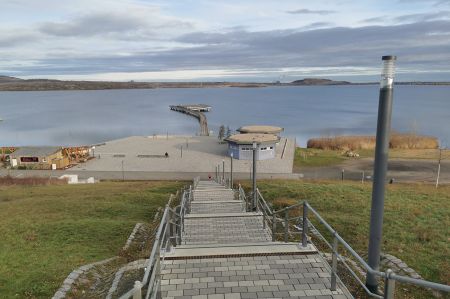Geiseltalsee - hundreds of years of coal mining - today tourism
- Written by Portal Editor
Three centuries of mining have had a lasting impact on the region between Braunsbedra, Müchel, Oechlitz and Merseburg. Coal mining created work for many generations until 1993 when the last coal train left the mine.
Let's leave the environmental aspects of coal mining aside for now, precisely because of the evacuation of the village of Lützerath and the greed for profit that is destroying the environment.
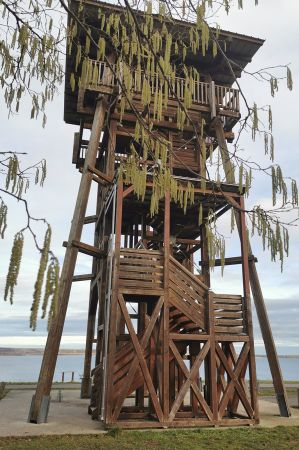 Relaxing, strolling, hiking, cycling and enjoying the wonderful view of the picturesque shore of the bright blue Geiseltalsee is the order of the day - that's where the pure holiday feeling comes from. Today idyllic holiday accommodation, 200 water berths and commercial facilities adorn a harbour. Parking spaces with sufficient capacities and the connection to the approx. 29 km long, asphalted lake circular path, which connects various tourist contact points around the Geiseltalsee, expand the infrastructure. From here you can also reach the bathing and surfing beach, beach volleyball courts, the campground, the camper place and external jetties. But it was a long way to get there.
Relaxing, strolling, hiking, cycling and enjoying the wonderful view of the picturesque shore of the bright blue Geiseltalsee is the order of the day - that's where the pure holiday feeling comes from. Today idyllic holiday accommodation, 200 water berths and commercial facilities adorn a harbour. Parking spaces with sufficient capacities and the connection to the approx. 29 km long, asphalted lake circular path, which connects various tourist contact points around the Geiseltalsee, expand the infrastructure. From here you can also reach the bathing and surfing beach, beach volleyball courts, the campground, the camper place and external jetties. But it was a long way to get there.
First lignite in opencast mining, then tourism
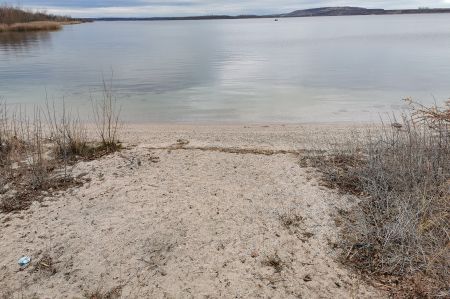 The Geiseltalsee is an opencast mining lake in southern Saxony-Anhalt. Today's huge lake was created in the course of recultivation measures in the former lignite mining area Geiseltal northeast of Müchel. At almost 19 square kilometres, it is the largest artificial lake in Germany, is one of the ten most water-rich lakes in Germany and is the largest body of water in the central German lake district. Together with other lakes to the southeast (Runstedter See, Südfeldsee and the much smaller Hassesee near Roßbach), it forms the Geiseltal lake complex.
The Geiseltalsee is an opencast mining lake in southern Saxony-Anhalt. Today's huge lake was created in the course of recultivation measures in the former lignite mining area Geiseltal northeast of Müchel. At almost 19 square kilometres, it is the largest artificial lake in Germany, is one of the ten most water-rich lakes in Germany and is the largest body of water in the central German lake district. Together with other lakes to the southeast (Runstedter See, Südfeldsee and the much smaller Hassesee near Roßbach), it forms the Geiseltal lake complex.
In the Geiseltal there was a lignite deposit from the Tertiary (Eocene), which covered an area of about 15 × 5 kilometres. The mining of coal can be documented as early as 1698, but it only gained importance in the second half of the 19th century. The pits that were developed served primarily to supply the surrounding sugar factories. Overall, however, funding was at a low level. Between 1861 and 1906 it amounted to only about 4.4 million tons.
 In the course of advancing industrialization, investigations provided new insights into the extent of the deposit, which was developed on an industrial scale from 1905/06.
In the course of advancing industrialization, investigations provided new insights into the extent of the deposit, which was developed on an industrial scale from 1905/06.
Within a few years, the opencast mines Elisabeth (1907), Rheinland (1907), Cecilie (1907), Beuna (1907), Leonhardt (1910), Vesta (1910), Gute Hoffnung (1911), Pfännerhall (1911) and Elise (1912 ) the operation.
Eight briquette factories were built between 1897 and 1913 for further processing. One of the briquette presses is on display at the Pfännerhall central workshop, shown here in the picture.
There is no getting around the Marina Mücheln
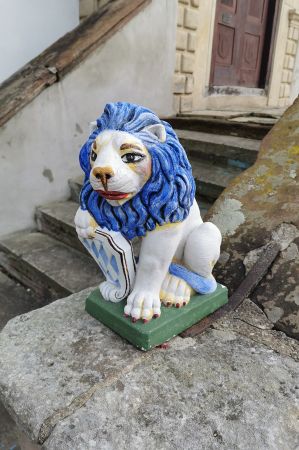 The foundation stone for today's harbour area was laid on February 27, 2006. This started the realization of a port location below the city of Müchel on an area of 40,000 m². Since the MARINA MÜCHELN finally opened on May 29, 2008, the port can be visited daily.
The foundation stone for today's harbour area was laid on February 27, 2006. This started the realization of a port location below the city of Müchel on an area of 40,000 m². Since the MARINA MÜCHELN finally opened on May 29, 2008, the port can be visited daily.
The harbour square makes a visit with the harbour tower including the "Hafenkontor" café and tourist information, the pier building with snack bar, the Geiseltal boat school, the café and restaurant "Pier 5" and the fish restaurant "Zur Forelle" something very special. From here you can explore the Geiseltalsee in a variety of ways: by boat on the approved sub-area, on foot or by bike on the asphalted circular lake trail, which is at least 29 kilometres long. You can also start from here on a round with the passenger ship "FELIX".
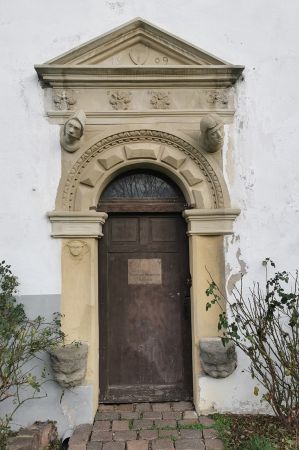 The harbour office café and tourist information for all visitors and a contact point for water sports enthusiasts are located directly in the harbour building. Here you will meet the harbour master for all questions about the boat and you can enjoy the day with coffee, cake, savoury snacks and refreshing drinks as well as ice cream. Just relax with an espresso or a fine glass of wine or secco from regional winegrowers.
The harbour office café and tourist information for all visitors and a contact point for water sports enthusiasts are located directly in the harbour building. Here you will meet the harbour master for all questions about the boat and you can enjoy the day with coffee, cake, savoury snacks and refreshing drinks as well as ice cream. Just relax with an espresso or a fine glass of wine or secco from regional winegrowers.
The tourist information has information about the region ready for you. You can also get souvenirs and regional gifts here, such as fine wines from local winegrowers, postcards and much more.
Today, idyllic holiday accommodation, 200 water berths and the commercial facilities mentioned adorn the harbour. Parking spaces with sufficient capacities and the connection to the approx. 29 km long, asphalted lake circular path, which connects various tourist contact points around the Geiseltalsee, expand the infrastructure. From here you can also reach the bathing and surfing beach, beach volleyball courts, the campsite and external jetties. The Geiseltalsee camp offers you a wide variety of overnight accommodation options. Do you prefer camping or are you traveling with a caravan or motorhome or do you want to stay in a camping barrel or a family lodge?
Geiseltal legend stones - coupling points to the heavenly paths
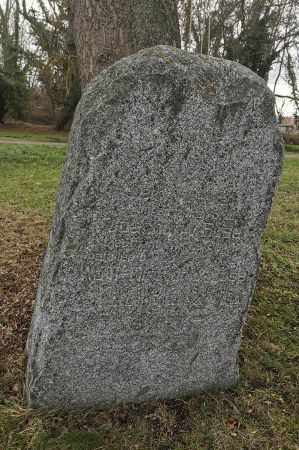 In 2013 the association Netzwerk Geiseltal e. V. supported by the state of Saxony-Anhalt with the installation of the "Geiseltal Legendary Stones" tourist themed road. For this purpose, boulders with stainless steel panels were installed at 25 locations around the Geiseltalsee, which offer destinations to tourists and visitors who are guided by supervisors or GPS coordinates on the trail of the Geiseltal sagas. Conceptually, this concept continues the strategy of educational tourism in Saxony-Anhalt and offers coupling points to the tourism routes Himmelswege, Via Regia, the Mühlenwanderweg and the Jakobsweg, which affect the area of the Geiseltalsee at various points. In addition to three 14-meter- high observation towers, numerous gastronomic and tourist facilities are under construction or in planning.
In 2013 the association Netzwerk Geiseltal e. V. supported by the state of Saxony-Anhalt with the installation of the "Geiseltal Legendary Stones" tourist themed road. For this purpose, boulders with stainless steel panels were installed at 25 locations around the Geiseltalsee, which offer destinations to tourists and visitors who are guided by supervisors or GPS coordinates on the trail of the Geiseltal sagas. Conceptually, this concept continues the strategy of educational tourism in Saxony-Anhalt and offers coupling points to the tourism routes Himmelswege, Via Regia, the Mühlenwanderweg and the Jakobsweg, which affect the area of the Geiseltalsee at various points. In addition to three 14-meter- high observation towers, numerous gastronomic and tourist facilities are under construction or in planning.
Today you can enjoy the wines from this exclusive location.
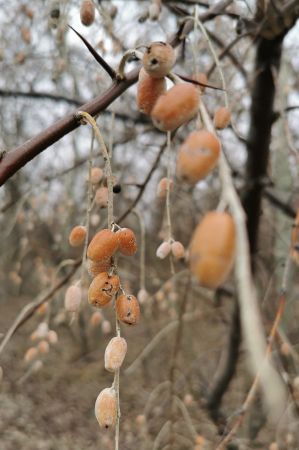 In 2000, the Reifert family began planting vines on the slopes of the Geiseltalsee. At that time they were still smiled at, today the vineyard is one of the highest forms of recultivation of former opencast mining sites. It is south-facing and has a 30% slope, and the largest artificial lake in Central Germany also reflects the sunlight and protects the vines from frost in winter.
In 2000, the Reifert family began planting vines on the slopes of the Geiseltalsee. At that time they were still smiled at, today the vineyard is one of the highest forms of recultivation of former opencast mining sites. It is south-facing and has a 30% slope, and the largest artificial lake in Central Germany also reflects the sunlight and protects the vines from frost in winter.
The vineyard has therefore already met with widespread media interest. The winemaker family was reported on, among other things, on the MDR programs "Unter Uns", "Mittagsmagazin" and MDR Spezial - The reportage "Kohle, Wasser, Wein - The winemaker from the waste dump". In addition, winemaker Lars Reifert has already received the Future Prize for the most innovative vineyard in Neustadt an der Weinstraße.
The Geiseltalsee camp offers you a wide variety of overnight accommodation options. Do you prefer camping or are you traveling with a caravan or motorhome or do you want to stay in a camping barrel or a family lodge? Here you can live out your dreams all year round. The Geiseltalsee Camp is only closed over Christmas and New Year's Eve.
New Year's diving at the Geiseltalsee
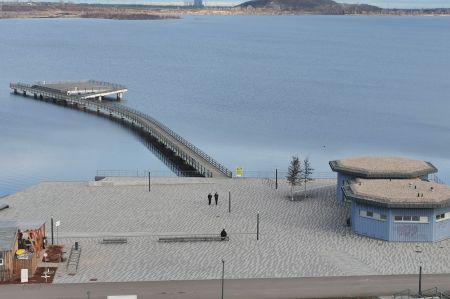 To welcome the new year, on January 7, 2023 from 10 a.m., the old year will be driven away with a dive in the Geiseltalsee or you daringly plunge into the water as a swimmer while bathing. At the Stöbnitz beach, there is a lot of fun in or under water, a great start to the year for all those who prefer to stay on the beach. There is no shortage of warm drinks and food to warm you up after having fun in the cool water.
To welcome the new year, on January 7, 2023 from 10 a.m., the old year will be driven away with a dive in the Geiseltalsee or you daringly plunge into the water as a swimmer while bathing. At the Stöbnitz beach, there is a lot of fun in or under water, a great start to the year for all those who prefer to stay on the beach. There is no shortage of warm drinks and food to warm you up after having fun in the cool water.
Please read as well:
Geiseltalsee - a hike to Frankleben Castle
Aquileia - floor mosaic in the cathedral
-
 Geiseltalsee at Mücheln for Outdooractivities
Geiseltalsee at Mücheln for Outdooractivities
Geiseltalsee at Mücheln for Outdooractivities
Geiseltalsee at Mücheln for Outdooractivities
-
 Geiseltalsee at Mücheln for Outdooractivities
Geiseltalsee at Mücheln for Outdooractivities
Geiseltalsee at Mücheln for Outdooractivities
Geiseltalsee at Mücheln for Outdooractivities
-
 Geiseltalsee at Mücheln for Outdooractivities
Geiseltalsee at Mücheln for Outdooractivities
Geiseltalsee at Mücheln for Outdooractivities
Geiseltalsee at Mücheln for Outdooractivities
-
 Geiseltalsee at Mücheln for Outdooractivities
Geiseltalsee at Mücheln for Outdooractivities
Geiseltalsee at Mücheln for Outdooractivities
Geiseltalsee at Mücheln for Outdooractivities
-
 Geiseltalsee at Mücheln for Outdooractivities
Geiseltalsee at Mücheln for Outdooractivities
Geiseltalsee at Mücheln for Outdooractivities
Geiseltalsee at Mücheln for Outdooractivities
-
 Geiseltalsee at Mücheln for Outdooractivities
Geiseltalsee at Mücheln for Outdooractivities
Geiseltalsee at Mücheln for Outdooractivities
Geiseltalsee at Mücheln for Outdooractivities
-
 Geiseltalsee at Mücheln for Outdooractivities
Geiseltalsee at Mücheln for Outdooractivities
Geiseltalsee at Mücheln for Outdooractivities
Geiseltalsee at Mücheln for Outdooractivities
-
 Geiseltalsee at Mücheln for Outdooractivities
Geiseltalsee at Mücheln for Outdooractivities
Geiseltalsee at Mücheln for Outdooractivities
Geiseltalsee at Mücheln for Outdooractivities
-
 Geiseltalsee at Mücheln for Outdooractivities
Geiseltalsee at Mücheln for Outdooractivities
Geiseltalsee at Mücheln for Outdooractivities
Geiseltalsee at Mücheln for Outdooractivities
-
 Geiseltalsee at Mücheln for Outdooractivities
Geiseltalsee at Mücheln for Outdooractivities
Geiseltalsee at Mücheln for Outdooractivities
Geiseltalsee at Mücheln for Outdooractivities
-
 Geiseltalsee at Mücheln for Outdooractivities
Geiseltalsee at Mücheln for Outdooractivities
Geiseltalsee at Mücheln for Outdooractivities
Geiseltalsee at Mücheln for Outdooractivities
-
 Geiseltalsee at Mücheln for Outdooractivities
Geiseltalsee at Mücheln for Outdooractivities
Geiseltalsee at Mücheln for Outdooractivities
Geiseltalsee at Mücheln for Outdooractivities
-
 Geiseltalsee at Mücheln for Outdooractivities
Geiseltalsee at Mücheln for Outdooractivities
Geiseltalsee at Mücheln for Outdooractivities
Geiseltalsee at Mücheln for Outdooractivities
-
 Geiseltalsee at Mücheln for Outdooractivities
Geiseltalsee at Mücheln for Outdooractivities
Geiseltalsee at Mücheln for Outdooractivities
Geiseltalsee at Mücheln for Outdooractivities
-
 Geiseltalsee at Mücheln for Outdooractivities
Geiseltalsee at Mücheln for Outdooractivities
Geiseltalsee at Mücheln for Outdooractivities
Geiseltalsee at Mücheln for Outdooractivities
-
 Geiseltalsee at Mücheln for Outdooractivities
Geiseltalsee at Mücheln for Outdooractivities
Geiseltalsee at Mücheln for Outdooractivities
Geiseltalsee at Mücheln for Outdooractivities
-
 Geiseltalsee at Mücheln for Outdooractivities
Geiseltalsee at Mücheln for Outdooractivities
Geiseltalsee at Mücheln for Outdooractivities
Geiseltalsee at Mücheln for Outdooractivities
-
 Geiseltalsee at Mücheln for Outdooractivities
Geiseltalsee at Mücheln for Outdooractivities
Geiseltalsee at Mücheln for Outdooractivities
Geiseltalsee at Mücheln for Outdooractivities
-
 Geiseltalsee at Mücheln for Outdooractivities
Geiseltalsee at Mücheln for Outdooractivities
Geiseltalsee at Mücheln for Outdooractivities
Geiseltalsee at Mücheln for Outdooractivities
-
 Geiseltalsee at Mücheln for Outdooractivities
Geiseltalsee at Mücheln for Outdooractivities
Geiseltalsee at Mücheln for Outdooractivities
Geiseltalsee at Mücheln for Outdooractivities
-
 Geiseltalsee at Mücheln for Outdooractivities
Geiseltalsee at Mücheln for Outdooractivities
Geiseltalsee at Mücheln for Outdooractivities
Geiseltalsee at Mücheln for Outdooractivities
https://www.alaturka.info/en/germany/saxony-anhalt/5923-geiseltalsee-hundreds-of-years-of-coal-mining-today-tourism#sigProId4db5060506
